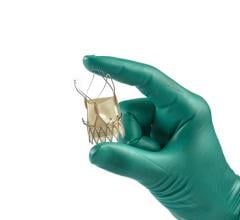January 28, 2008 - A new multi-center, international clinical trial that compares the safety and effectiveness of thoracic endovascular aortic repair (TEVAR) to open surgery for descending thoracic aortic aneurysms (TAA), indicates that TEVAR (the less invasive endovascular graft) is a promising treatment option for many patients.
Jon S. Matsumura, M.D., vascular surgeon at Northwestern Memorial Hospital and associate professor of surgery of Northwestern University Feinberg School of Medicine, has found that the one year survival estimates are 91.6 percent for patients in the endovascular group compared to 85.5 percent in the thoracotomy group. There were no aneurysm ruptures in either group in the first year. The results of this trial were published in the February issue of the Journal of Vascular Surgery.
Dr. Matsumura and co-authors Richard P. Cambria, M.D., Michael D. Dake, M.D., Randy D. Moore, M.D., Lars G. Svensson, M.D., and Scott Snyder PhD analyzed 12-month data on 230 patients treated at 42 hospitals in America, Australia, Canada, Poland, Czech Republic and Italy. When comparing the 160 patients treated with TEVAR to the 70 patients treated with thoracotomy repair they found TEVAR has:
• shorter procedure times
• fewer transfusions
• fewer intensive care days
• less than half the risk of major complications
• less than a third the risk of severe complications, including less than a third the risk of stroke and less than a fourth the risk of permanent paralysis
• shorter recovery times
This trial evaluated the Zenith TX2 TAA Endovascular Graft. This mature endovascular graft is made with surgical graft material sutured to self-expanding stainless steel stents and is precisely deployed with an advanced catheter system inserted through a small incision in the patient's groin artery. The device is investigational and is undergoing thorough review of the data by federal regulators.
Our results demonstrate that endovascular repair has striking potential benefits for patients with TAA," said Dr. Matsumura. "These patients need long-term follow-up to evaluate the durability of this new minimally invasive alternative to thoracotomy repair."
Thoracic aortic aneurysms affect approximately six of every 100,000 persons. The risk of rupture for large aneurysms is approximately 74 percent in patients without repair and more than 90 percent of those patients do not survive a rupture, according to one population-based study. Conventional treatment is a major operation involving thoracotomy (opening of the chest cavity through the ribs), sutured replacement of the diseased aorta with a fabric tube graft, and often requires partial heart bypass. Major complications include bleeding, stroke and paralysis of the lower half of the body.
Journal of Vascular Surgery provides vascular, cardiothoracic, and general surgeons with the most recent information in vascular surgery. Original, peer-reviewed articles cover clinical and experimental studies, noninvasive diagnostic techniques, processes and vascular substitutes, microvascular surgical techniques, angiography and endovascular management. Special issues publish papers presented at the annual meeting of the Journal's sponsoring society, the Society for Vascular Surgery.
For more information: www.jvascsurg.org


 October 23, 2024
October 23, 2024 








